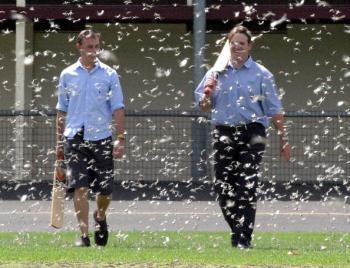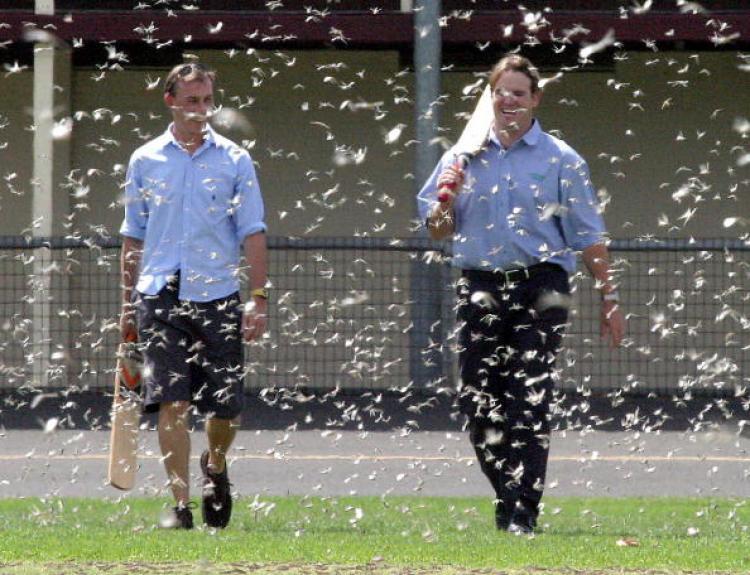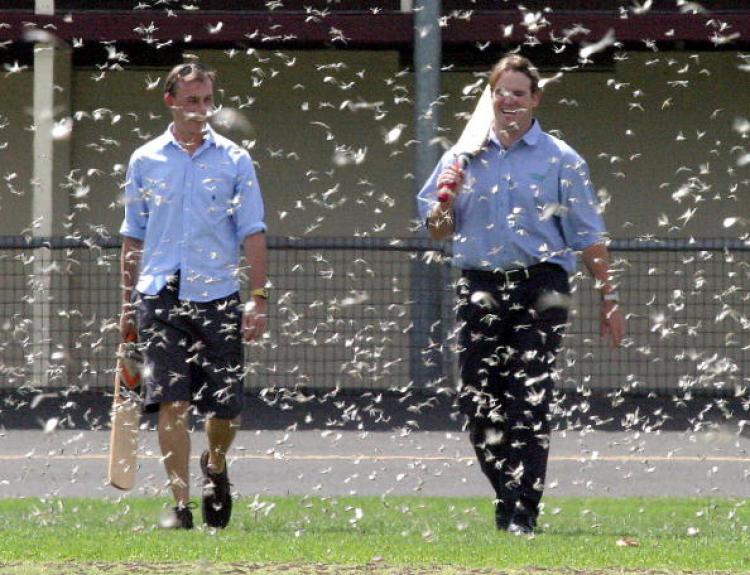Locust Outbreaks in South Eastern States of Australia
“We have a narrow window of around ten days to treat banding locusts before they take to the wing and become virtually uncontrollable,” said Steve Whan.

A plague of locust onto the oval at Dubbo, back in 2004. Warnings provided, this year, in a September bulletin on the Department of Agriculture, Fisheries and Forestry's website. Steve Cowley/AFP/Getty Images
|Updated:





